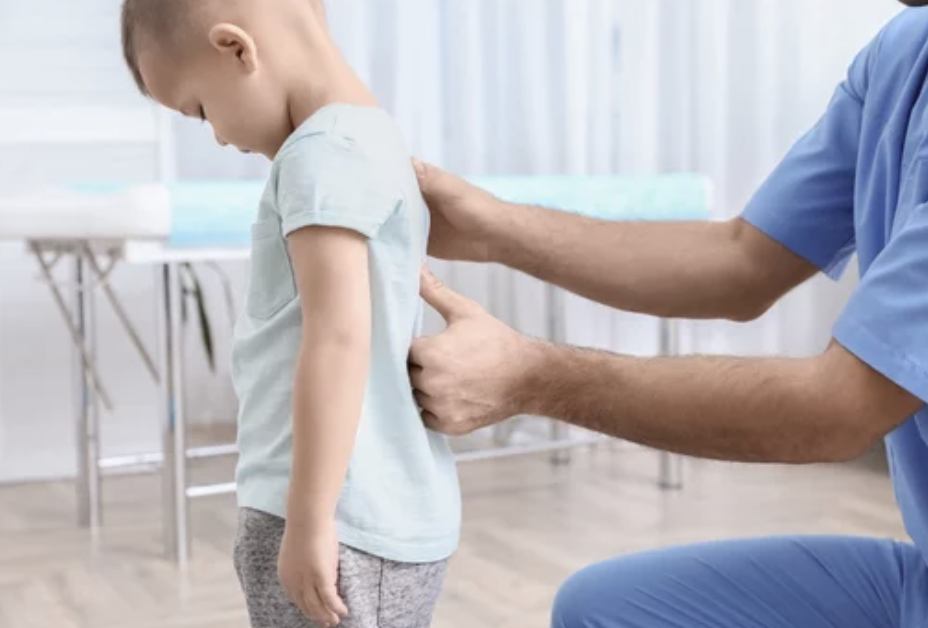Are you wondering what scoliosis is? Millions of individuals throughout the globe are affected by this widespread spinal ailment, yet many are still ignorant of its origins, signs, and viable treatments. That said, we will go deeply into the realm of scoliosis in this blog and give you a thorough grasp of this ailment. Join us as we examine the complexities of scoliosis, dispel myths about it, and discuss the most recent developments in its treatment.
What Is Scoliosis?
The medical disorder known as scoliosis causes the spine to curve laterally. Although it commonly appears in children or teenagers, it may also affect adults. The actual cause of scoliosis is often unclear; however, hereditary factors or neuromuscular diseases like cerebral palsy or muscular dystrophy may play a role. Scoliosis symptoms may vary from minor to severe and might include unequal shoulders or hips, a noticeable curve in the spine, and in more severe instances, breathing problems.
What Causes Scoliosis?
As we previously mentioned, in most situations, the precise cause of scoliosis is unclear; nevertheless, the following may be some causes of scoliosis:
- Scoliosis is more likely to affect members of the same family, which points to the possibility that the disorder has a hereditary component.
- Scoliosis is a condition that may be brought on by a number of neuromuscular conditions, including cerebral palsy and muscular dystrophy, amongst others.
- Congenital scoliosis is caused by abnormal development of the spine’s bones while the person is still in the womb.
- Scoliosis caused by unknown reasons, or idiopathic scoliosis, is the most frequent form of the condition and accounts for around 80% of all instances. That being said, idiopathic scoliosis is characterized by the absence of a discernible cause and often manifests itself throughout the adolescent years.
What Are the Symptoms of Scoliosis?
Scoliosis can cause a range of symptoms, which may vary depending on the degree of spinal curvature. These symptoms can be broad and diverse, and may be related to the specific effects of scoliosis on the body. The following is a list of some of the most prevalent symptoms of scoliosis:
Uneven shoulders or waist– The most prominent sign of scoliosis is a visible curvature in the spine, which may lead to uneven shoulders or waist. This is because scoliosis causes the spine to bend out of alignment.
Discomfort or pain in the back– Scoliosis is known to produce discomfort or pain in the back, especially in the lower back.
Affect range of motion– In extreme situations, scoliosis may restrict the range of motion in the back, which can make it difficult to perform day-to-day tasks.
Impair lung function– Scoliosis may sometimes impair lung function and lead to breathing difficulties; however, this complication is quite uncommon.
How Is Scoliosis Diagnosed?
In children of school age, scoliosis is often identified during the course of a standard physical examination or via the administration of a scoliosis screening. The doctor will do an examination of the back to look for evidence of curvature. In addition, the doctor may request imaging tests such as X-rays, CT scans, or MRI scans to establish the severity of the curve and rule out any other possible underlying disorders.
What Are the Possible Treatment Options for Scoliosis?
Scoliosis may be treated in a variety of ways, the specifics of which are contingent on the patient’s age as well as the severity of the curve. That being said, the following are some of the possible treatment options:
Bracing: In adolescents who are still developing, the use of a back brace may be recommended in order to prevent the curvature from becoming more severe. The child will need to have frequent checkups to ensure that the brace is fitting properly since it is required to be worn for a significant portion of each day.
Physical Therapy: In certain instances of scoliosis, treatment with physical therapy may help to reduce discomfort and increase mobility.
Surgery: In more severe situations, an operation may be required to both straighten the spine and stop any future curvature from occurring. The spinal fusion procedure is by far the most frequent surgical treatment for scoliosis. In this procedure, two or more vertebrae are fused together to form a single, straight bone.
Alternative Treatments: While the efficacy of certain alternative treatments, such as chiropractic and acupuncture, for scoliosis symptoms has not been well researched, these treatments may give some temporary relief.
Why Is Treating Scoliosis Important?
Scoliosis treatment is crucial for a number of reasons. First, scoliosis may result in physical symptoms such as back discomfort, breathing problems, and decreased movement. Scoliosis may develop and progress if ignored, possibly affecting quality of life and causing more serious spinal abnormalities.
Scoliosis may also lead to mental anguish and problems with self-esteem, especially in kids and teenagers. People with scoliosis may have better control of their symptoms, stop the problem from becoming worse, and feel better physically and emotionally by getting the proper therapy and treatment from medical professionals.
Get More Information About Scoliosis with Our Pediatric Scoliosis Experts
If you’re looking for more information regarding this medical condition, please give our experts a call or fill out a contact form, and we will be in touch with you very soon

